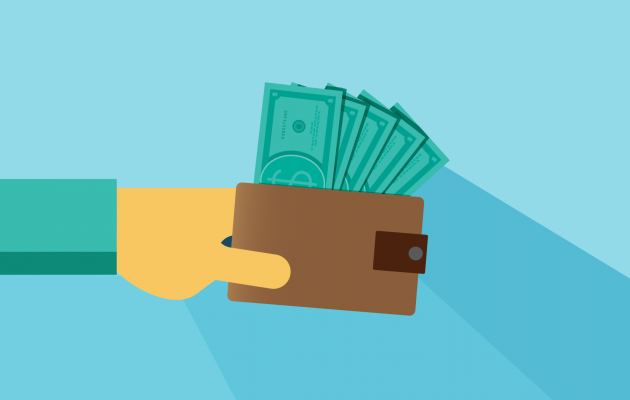How People Manage Their Money Has Changed

I have taken the opportunity to travel the world and love to learn about the cultures and languages spoken in the areas I visit. So, I have seen and experienced a lot of different environments and lots of different living conditions. But nothing compares to the abrupt change that occurred here in the US with the Coronavirus pandemic.
It was so fast, like flipping a light switch. Such quick change is disorienting when trying to figure out where things are going and what's coming next. But when it comes to personal finance, some things are becoming clearer, with some surprises popping up.
Everything was fine until March
It might seem like ancient history now, but 2019 was a good year for jobs. According to the US Department of Labor, the rate of employment growth slowed slightly from 2018. But the country still added about 2 million new jobs in 2019. January and February 2020 were pretty much following the same path, until March, which saw a drop of almost 1.4 million jobs. This slashed total US income by almost 27%, according to the US Bureau of Economic Analysis. That, along with stay-at-home lockdown orders and the additional loss of 12 million jobs through June has changed personal consumption overnight.
The things people stopped buying
As of this writing, the US Bureau of Economic Analysis is still compiling the 2nd Quarter (April, May, June) data. But what they released on June 25 about the 1st Quarter 2020 compared to 4th Quarter 2019 was an eye-opener and will likely jump much higher when the harder hit 2nd Quarter data is released.
Clothing and footwear (-10%), recreation services (-9%), food services and accommodations (-9%), motor vehicles and parts (-8%) and transportation services (-7%) were the hardest hit areas for decreased consumption and quite honestly, makes sense. No one was traveling and restaurants were basically shut down.
And while gasoline and other energy goods declining (-4%) also made sense, the decline in healthcare consumption (-4%) was surprising. It looks like this was the result of postponing elective or normal medical procedures.
On the other end of the scale, food and beverages purchased for off-premise consumption was way up (+7%). That's why we had all those empty grocery shelves. Other non-durable goods, which will include cleaning products and sanitizers were up, too (+3%).
Not surprising was the decline in consumer credit use, as reported by the Federal Reserve. Through May, consumer credit borrowing (a category that excludes real estate) declined by $117 billion, a -3% drop. You might suspect the bulk of the decline in motor vehicle expenses was the reason. But apparently not.
Revolving credit, which includes credit card and lines of credit, normally account for about 25% of the total consumer debt balance. But through May, it was 98% of the decline in consumer debt balances. With all the stay-at-home restrictions, one would reasonably assume Internet purchases using credit cards would have driven balances up. But no, the opposite occurred. They may indeed have been using their cards but consumers were not increasing their spending and were actually paying down debt. This says the consumer has become much more cautious about the debt they incur.
Current market research shows 70% not yet ready for normal out-of-home activities
The easing of government mandated restrictions won't be enough to lure consumers back into stores, according to a July 8, 2020 report from a leading international market research firm. A very large proportion of people are not comfortable shopping in public. This study showed that a switch is being made to continue the increased use of online shopping, even with stores re-opening.
For the US, only household supplies and home entertainment were growth areas according to this report. Big ticket items were not. This research firm described it as a "homebody economy."
But when they do shop in public, normal brand or store loyalty is not the overriding decision. Basically, consumers are being forced to do things differently, like curbside pickup or home delivery. They are also paying attention to how a retailer is protecting both the consumer and store employees from COVID-19 infection. Visible signs of protection, like plastic barriers, required face mask use and social distancing markers are preferred by most US consumers, according to the study. The research firm called it the "health and caring economy."
What's coming next?
Since the growth of COVID-19 infection is accelerating in many states, causing a reversal in economic re-opening, it is impossible to determine when things get to pre-COVID-19 "normal." But when it does, the market research study quoted above says getting back to outdoor retail shopping, eating at a restaurant, seeing family and friends and taking a road trip more than 2 hours from home is high on the list. But airplane travel, attending a large event or other activities that put them in close-proximity to large numbers of other people are not.
Lost in all the focus on the spread of COVID-19 is the fact a huge amount of fiscal stimulus was added to the economy by the Federal Reserve. Government benefits paid to individuals basically doubled in April and May. This covers both unemployment benefits and the COVID-19 stimulus money. But since consumption was greatly restrained, a tremendous amount of money, almost $200 billion by my estimate, was not spent, propelling the government's measure of the "savings" rate (disposable income less consumption) to record high levels, up to 32% in April and 23% in May. It was 8% in February 2020 and that is considered good by economists.
Where did this money go? Evidently it is staying in the bank accounts of individuals and households. And that points to a possible shift in how our economy works.
Financial planning experts urge an investment focus but fear status quo behaviors
With so much uncertainty in the economy, it should come as no surprise that financial management experts predict changes in the average household budget. A survey of 1,000 Americans by a leading investment firm said the pandemic gave about two-thirds of consumers motivation to cut their spending. This study said increases in an emergency savings fund were very likely and that the respondents said they are more likely to buy more American-made products and patronize small businesses.
Other financial planners have been quoted in recent news stories that their research shows consumers wanting to "splurge" when everything gets back to normal. These professionals see big increases in purchases of recreational vehicles, instead of spending money on air travel or expensive vacations at resorts or internationally.
From where I sit, closely watching the data at our credit union, I think it will be somewhere between frugal savings and splurging. Yes, people will want to return to old habits. But they are also being forced to adopt new ones that they will likely see as better than the old ways.
Putting more money aside for emergencies is very likely, in my opinion. Some might want to venture into the stock market to find higher yields for bigger investment gains. Personally, I see the big upward and downward swings in stocks and bonds as a warning to be careful, as investment volatility has definitely increased.
People will want to control what they can and be better prepared for the future. Actually, what comes out of that is a healthier household budget and a more stable economy, less prone to big upward or downward swings. Funny, but as we advance toward curing COVID-19, we could also be creating a healthier economy for all of us. And that is a very good thing.


Join the discussion